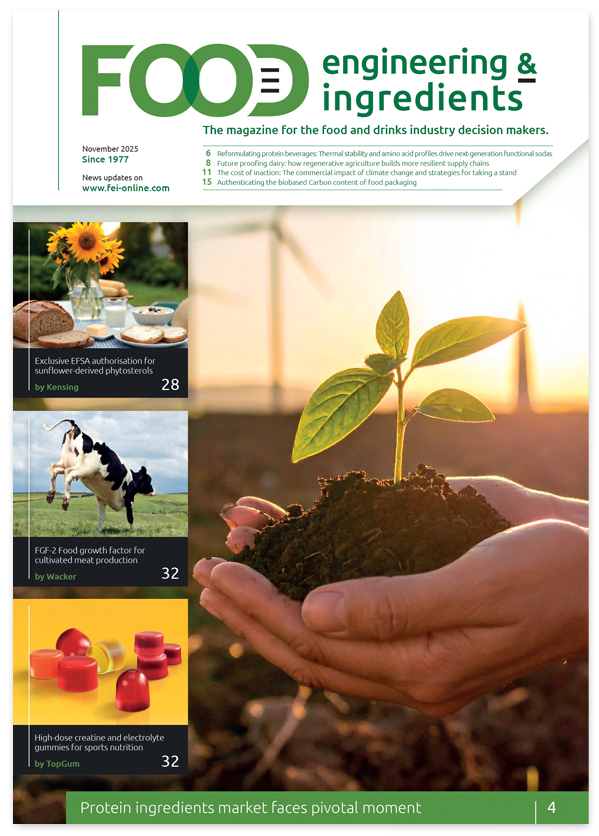Fungal fermentation: A novel approach to upcycling food waste
A new study explores the potential of Neurospora intermedia to transform agricultural by-products into nutritious and palatable food, offering insights into sustainable food production and waste reduction.
Researchers at the University of California, Berkeley, have unveiled promising findings on the use of Neurospora intermedia, a filamentous fungus, to convert food waste into edible products. The study, published in Nature Microbiology [1], demonstrates the fungus’s ability to ferment a wide range of agricultural by-products, potentially opening new avenues for sustainable food production.
Origins in traditional Indonesian cuisine
The research, led by Dr Vayu Hill-Maini, a Miller postdoctoral fellow at UC Berkeley, draws inspiration from oncom, a traditional fermented food from West Java, Indonesia. Oncom, which comes in red and black varieties, is produced by fermenting soy pulp or peanut pressings with fungi.
Hill-Maini’s team found that red oncom is primarily produced by Neurospora intermedia, while black oncom involves various Rhizopus species. This discovery led to a deeper investigation into the genetic makeup and capabilities of N. intermedia.
Genetic insights and adaptability
The study revealed two distinct types of N. intermedia: wild strains found globally and strains adapted specifically to agricultural waste. This adaptation suggests a form of domestication as the fungus evolved to thrive on human-generated by-products.
“What we think has happened is that there’s been a domestication as humans started generating waste or by-products, and it created a new niche for Neurospora intermedia,” Hill-Maini explained. “And through that, probably the practice of making oncom emerged.”
Notably, the adapted strains showed enhanced ability to degrade cellulose, indicating their potential for efficient waste conversion.
Substrate versatility and nutritional transformation
The researchers demonstrated N. intermedia’s ability to grow on 30 different types of agricultural waste, including sugar cane bagasse, tomato pomace, almond hulls, and banana peels. Importantly, no toxic by-products were detected during this process.
One of the most significant findings was the fungus’s capacity to transform indigestible plant material into digestible, nutritious food within approximately 36 hours. This process not only increases the protein content but also alters the flavour profile and potentially enhances the nutritional value of the substrate.
Sensory evaluation and culinary applications
To assess the palatability of N. intermedia-fermented products, the researchers conducted sensory evaluations. In collaboration with Rasmus Munk, head chef at the Michelin two-star restaurant Alchemist in Copenhagen, they presented red oncom to 60 individuals unfamiliar with the food.
“We found that, basically people who never tried this food before assigned it positive attributes – it was more earthy, nutty, mushroomy,” Hill-Maini reported. The fermented products consistently rated above six out of nine in taste tests.
The culinary potential of N. intermedia extends beyond traditional applications. Munk has incorporated a Neurospora-based dessert into Alchemist’s menu, featuring fermented rice custard with unique flavour notes.
Implications for food science and sustainability
This research presents several significant implications for food science:
- Waste reduction: The ability to upcycle a wide range of agricultural by-products could significantly reduce food waste in industrial processes.
- Novel ingredient development: N. intermedia fermentation offers a new tool for creating unique flavours and textures in food products.
- Nutritional enhancement: The process of fungal fermentation may improve the nutritional profile of otherwise indigestible or low-value substrates.
- Sustainable protein production: As a protein-rich food source, Neurospora-fermented products could contribute to meeting global protein demands more sustainably.
Future research directions
Hill-Maini and his team plan to further investigate the mechanisms by which N. intermedia produces various flavours and aromas during fermentation. This knowledge could lead to more targeted applications in food processing and product development.
Additionally, the researchers aim to scale up their experiments to address larger volumes of food waste, potentially developing industrial applications for this fermentation process.
Reference:
- Hill-Maini, V., et al. (2024). Neurospora intermedia from a traditional fermented food enables waste-to-food conversion. Nature Microbiology.
https://doi.org/10.1038/s41564-024-01799-3




